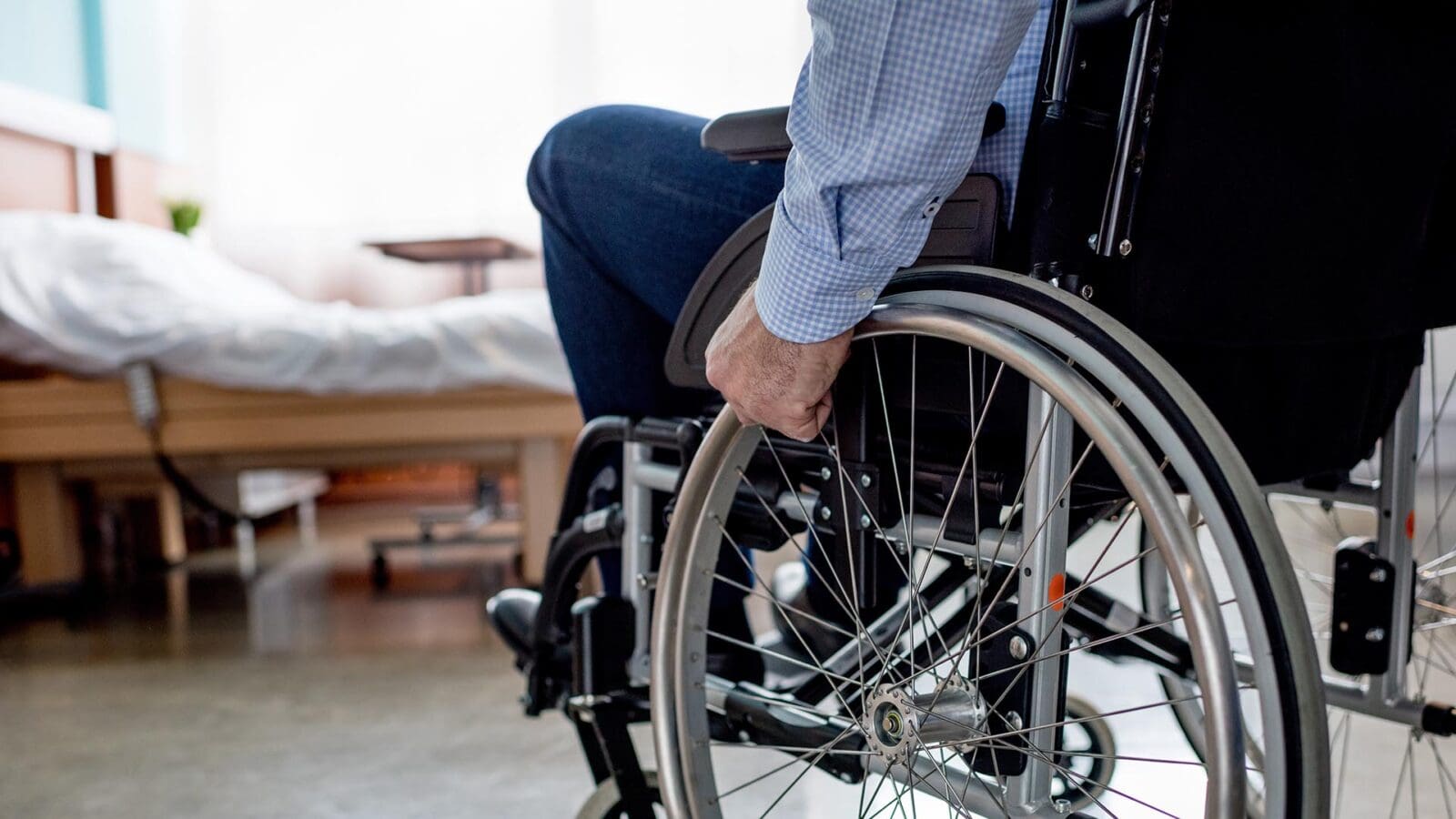Absolutely the best attorney for getting your VA benefits. After 7 years of denial, I found Brendan Garcia of VetLaw, He reviewed my case, set up a plan , scheduled my video hearing in front of a Veteran law judge, flew out to Phoenix to be there with me during the hearing. Hired a doctor to help draft a report to help my case. When all the smoked cleared, I’m now collecting max disability monthly, back pay beyond my wildest dreams. Brendan Garcia never stopped. He is an expert in Veterans law. Best decision of my life was to have him on my side. Bar none, Brendan is a terrific VA benefits attorney!
Nerve pain and paralysis from service-connected sciatica are recognized as disabling conditions by the VA, allowing veterans to obtain VA disability benefits.
Summary
- Veterans often develop sciatica due to service-related injuries. The VA compensates this condition based on its severity, ranging from mild symptoms to complete paralysis.
- Back injuries, strenuous activities, and chronic conditions can contribute to a veteran’s chances of developing sciatica. Symptoms of sciatica range from pain and tingling to severe muscle weakness and incontinence.
- Sciatica VA ratings are given under three categories: paralysis, neuritis, and neuralgia.
- Combined VA ratings can qualify veterans with sciatica for Total Disability Individual Unemployability (TDIU) benefits.
- Sciatica treatment options include physical therapy, medications, and surgery, in severe cases. Most recover in six weeks, but chronic symptoms or complications may persist, potentially qualifying for ongoing VA disability benefits.
It is very common for veterans to suffer from injuries that lead to a nerve condition called sciatica. This physical condition can be debilitating, impacting a veteran’s ability to secure gainful employment or perform daily activities.
For this reason, VA disability for sciatica is available to compensate veterans who suffer from this painful nerve condition. Whether you are considering filing a claim, trying to improve your VA rating for sciatica, or seeking to appeal a denied VA claim, we are here to help guide you through the process.
To speak with our team about your case, consider contacting VetLaw today. To schedule a free consultation, you can reach us at (855) 391-1579 or by filling out a contact form.
What Are the Signs and Symptoms of Sciatica?
Sciatica refers to pain, weakness, or tingling that happens along the sciatic nerve in the back of the leg. This condition happens when one or more nerves are pinched, compressed, or otherwise irritated. Oftentimes, it results from a herniated disc or an overgrowth of the bone.
Also referred to as lumbar radiculopathy, sciatica symptoms can include:
- Pain: The most common symptom of sciatica, the pain can range from a mild ache to sharp and burning pain. The pain can begin slowly and get worse after sitting or standing for prolonged periods of time, during certain times of the day, or sneezing, coughing, or laughing. Many people also report feeling pain shoot or radiate down the impacted leg.
- Tingling (paresthesia): Similar to when your leg falls asleep, many people state an uncomfortable tingling sensation in the affected leg.
- Numbness: Sciatica affects the communication between your brain and your legs, leading to a lack of sensations in the impacted area.
- Muscle weakness.
- Urinary or fecal incontinence: some people report experiencing this severe symptom, which affects a person’s ability to control their urination or defecation.
Sciatica resolves for many veterans, but some are left with lingering symptoms, particularly pain and weakness in the impacted leg.
Conditions That Contribute to a Veteran’s Likelihood of Developing Sciatica
There are several factors that put veterans at high risk for developing sciatica. While an acute injury can result in sciatica, most of the risk factors for this disability are ongoing conditions that can be mitigated or reduced.
Some of these risk factors include:
- Current or previous injuries to the spine or lower back
- Strenuous physical activity leading to wear and tear of the body
- Insufficient core strength
- Work activities such as heavy lifting, regular bending, or sitting in an awkward position for an extended period of time
- Chronic medical conditions such as Type 2 diabetes and obesity
- Smoking or using other tobacco products
- Sedentary lifestyle
While many people recover from sciatica, some develop long-term, chronic pain that affects their ability to work or engage in everyday activities. In some cases, a person can develop “drop foot,” making it impossible to walk normally. If your sciatica impacts your daily life, you may be entitled to VA disability for sciatica.
Does the VA Consider Sciatica to Be a Disability?
Yes, the VA does consider sciatica to be a disability. The main factors that determine whether you have a viable sciatica VA disability claim are its relationship to your active duty military service and its severity.
Based on information in the Annual Benefits Report for 2022, over one million veterans receive compensation for paralysis of the sciatic nerve. In fact, it is common for sciatica to develop as a result of another back problem or condition.
Many veterans who have a different service-connected disability such as lumbosacral strain or cervical pain, for instance, service-connect their sciatica as a secondary condition.
What Is the VA Rating for Sciatica?
The VA considers sciatica to be a nerve issue. Nerve conditions are grouped into three main categories under 38 CFR § 4.124a based on the severity of your symptoms and the nature of your disability.
Paralysis
The most severe category, paralysis refers to the loss of strength or control of muscles in the body. This is typically caused by major damage to the nerve. Under Diagnostic Code 8520, paralysis ratings for sciatica are assigned as follows:
- 10% for mild but incomplete paralysis
- 20% for moderate but incomplete paralysis
- 40% for moderately severe but incomplete paralysis
- 60% for severe but incomplete paralysis characterized by limited functionality, muscular atrophy, and poor circulation
- 80% for complete paralysis in which all muscles below the knee fail to function normally
Neuritis
Caused by inflammation of peripheral nerves and other nerves beyond the spine and brain, neuritis results in loss of reflexes and sensation, as well as limited functionality of the affected body part.
Diagnostic Code 8620 provides for neuritis ratings, which vary depending on the severity of the condition:
- 10% for mild neuritis
- 20% for moderate neuritis
- 40% for moderately severe neuritis
- 60% for severe neuritis
Neuralgia
The least severe of all three categories, neuralgia is marked by sharp pain due to damage or irritation of the nerve. Under Diagnostic Code 8720, the sciatica VA rating for neuralgia can be either:
- 10% is assigned for mild cases where the veteran experiences tingling or mild pain and minor interference with the functionality of the body part
- 20% is assigned for moderate cases where the veteran experiences numbness, tingling, and moderate/severe pain as well as interference with the functionality of the body part
Can You Receive TDIU Benefits for Sciatica?
Many of our current and prospective clients inquire about whether or not they can receive Total Disability based on Individual Unemployability (TDIU) benefits for their sciatica.
TDIU benefits are granted to veterans who are completely unable to work due to their service-connected disability or disabilities. If you are awarded TDIU benefits, you will receive a monthly compensation equivalent to that of the 100% rating for your disability.
Combining a Sciatica VA Rating With Another Disability Can Qualify You for TDIU Benefits
Oftentimes, sciatica accompanies another disability. For this reason, a common strategy for obtaining TDIU benefits for this condition is to obtain a secondary sciatica VA rating in conjunction with your primary disability.
You can receive TDIU benefits if you have at least one service-connected disability rated at 60% or two or more service-connected disabilities with at least one condition rated at 40% and a combined total rating of 70% or more.
Therefore, if you suffer from mild to moderate sciatica rated below 60%, you may combine your ratings from multiple disabilities to receive TDIU benefits. Even if you do not meet the combined ratings criteria, you may also qualify for extraschedular TDIU under certain circumstances.
What Should You Do if Your VA Claim for Sciatica Is Denied?
Unfortunately, many veterans are initially denied VA disability for sciatica. Your claim may be denied for a range of reasons, including a lack of sufficient evidence, human error, or disagreement regarding the severity of your disability.
If your VA claim for sciatica was denied, your attorney can help you file an appeal to overturn the decision. There are three different options for appealing a denied claim, which include:
- Filing a Supplemental Claim to include additional evidence.
- Requesting a Higher-Level Review to have a senior reviewer reassess the decision.
- Appealing through the Board of Veterans’ Appeals to submit new evidence, review the decision, or request a hearing.
If your claim for sciatica was denied, there are options available to continue your case. The appeal option you utilize will depend on your specific situation, and there is no one-size-fits-all approach for appealing a denied claim.
Your VA disability claims attorney can help you navigate this complex process and ensure that you secure the benefits you need and deserve.
How an Attorney Near You Can Help Once Your VA Claim for Sciatica Has Been Denied
If your VA claim for sciatica has been denied, you are not alone. Thousands of veterans are unfairly denied the VA disability benefits for sciatica that they deserve. Many are left feeling hopeless and unsure of where to turn for help.
At VetLaw, we center our practice around helping veterans successfully obtain the disability benefits they need to regain control of their lives. Leveraging our breadth of knowledge and years of experience with the VA system, we are confident in our ability to secure a favorable outcome for your claim.
Consider contacting our office today to begin your free case review with our team of experienced attorneys. You can reach us at (855) 391-1579 or by filling out a contact form.
Frequently Asked Questions
Can sciatica be cured? Will I lose my VA disability rating if my sciatica resolves but I still experience pain?
Oftentimes, yes, a veteran’s sciatica can be cured. VA disability benefits are intended to compensate veterans for the period when they experienced symptoms of their service-related disability.
Therefore, once your sciatica symptoms no longer meet the criteria for a 10% rating or higher, you would likely no longer be eligible for a VA rating for sciatica. However, some veterans continue to experience chronic pain even after their sciatica has technically resolved.
Chronic pain is a known complication of sciatica, and the VA also recognizes it as a disability. In theory, a veteran may be able to file a chronic pain VA disability claim for benefits by proving it is related to their service-connected sciatica.
What are the major treatment options for veterans with sciatica?
For less serious cases of service-connected sciatica, veterans may be able to relieve their sciatica with a regimen of ice, heat, over-the-counter anti-inflammatories, and gentle stretching, per Cleveland Clinic recommendations for sciatica.
Medical intervention by a healthcare professional may also include prescription pain relievers, muscle relaxants, physical therapy, and steroid injections into the spine.
For severe sciatica that hasn’t responded to other treatments, a doctor may recommend surgery to alleviate the pressure on your sciatic nerve. This is usually a last resort, given that there are numerous risks associated with surgery, particularly surgery involving the spine.
How long does it take to recover from service-connected sciatica?
Typically, a veteran’s sciatica symptoms don’t persist for more than six weeks. However, this assumes that the veteran follows medical guidance for self-management or sought professional care in a timely manner.
Additionally, this estimate does not apply to veterans who undergo surgery to address their sciatica symptoms. Even without any post-operative complications, the body needs time to heal following surgical intervention.
This may delay a veteran’s return to normal activities. If your sciatica is related to an acute injury, that can also extend your sciatica recovery timeline.











